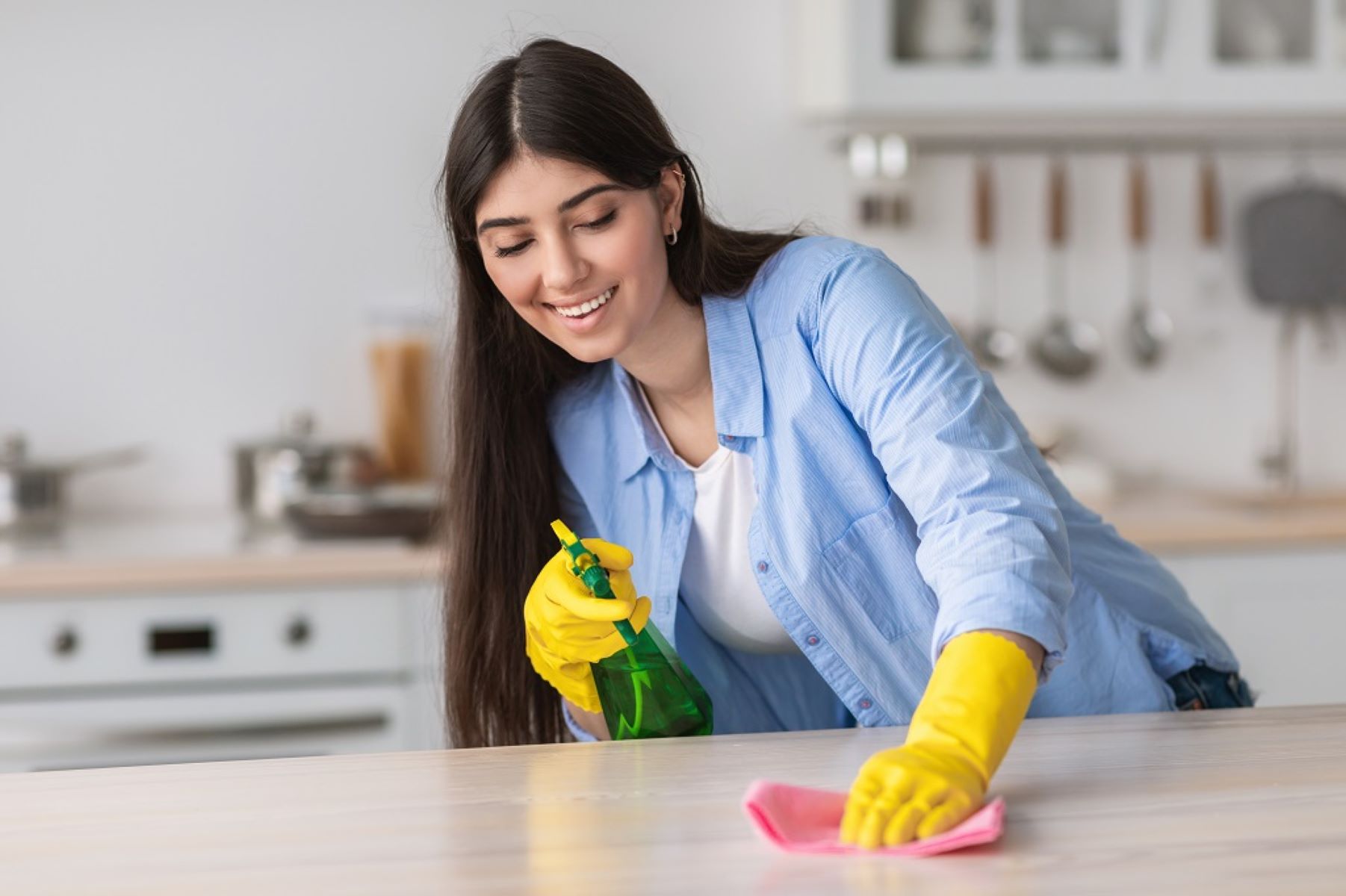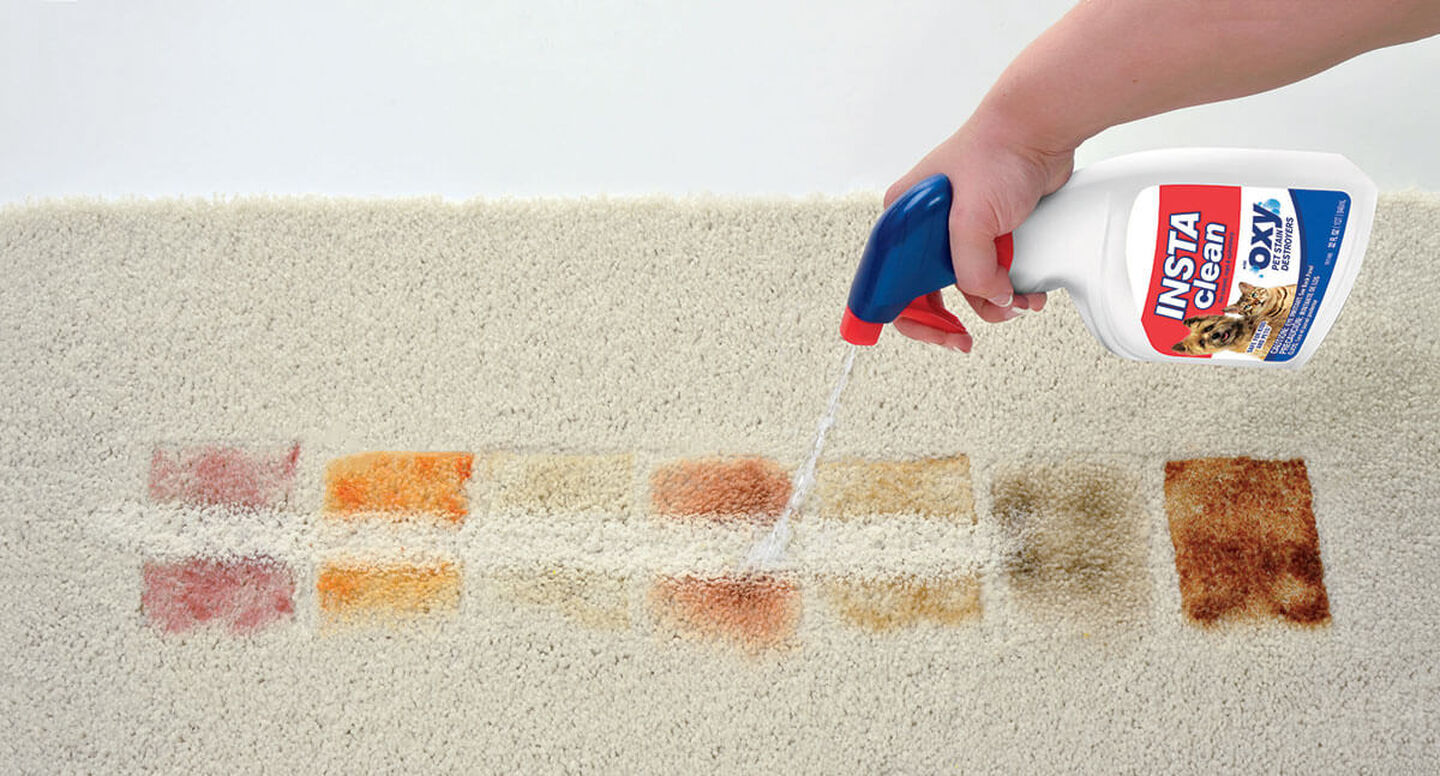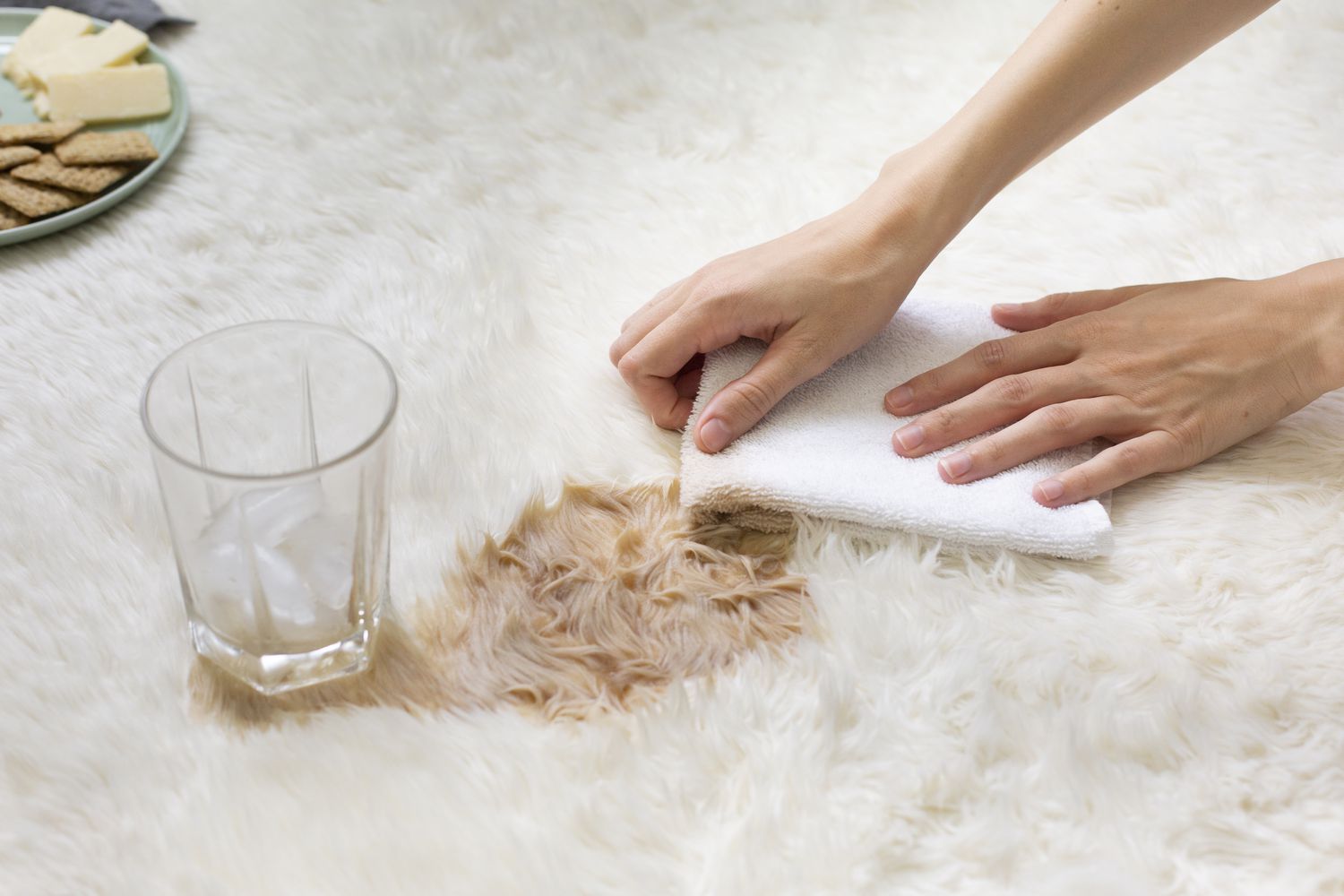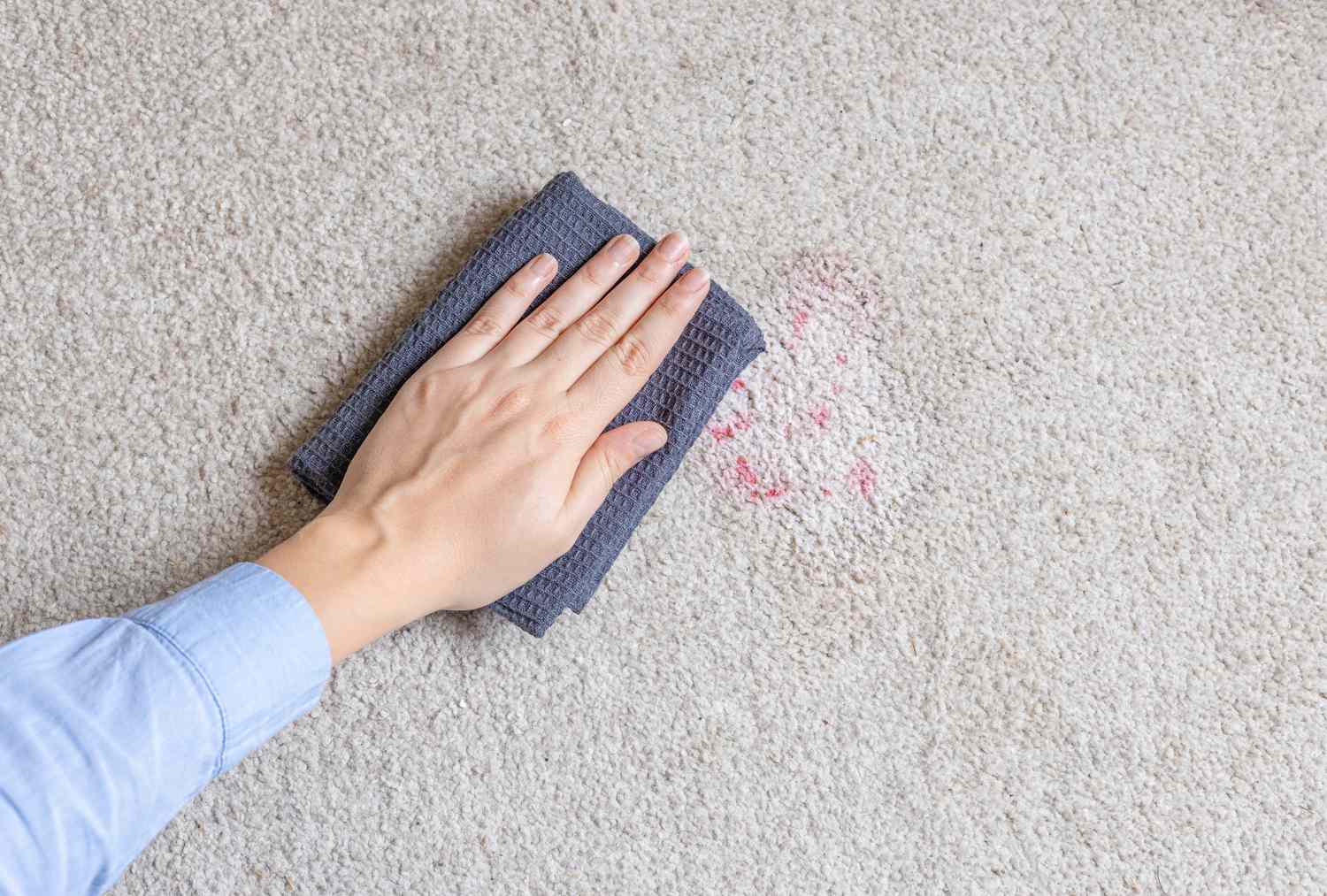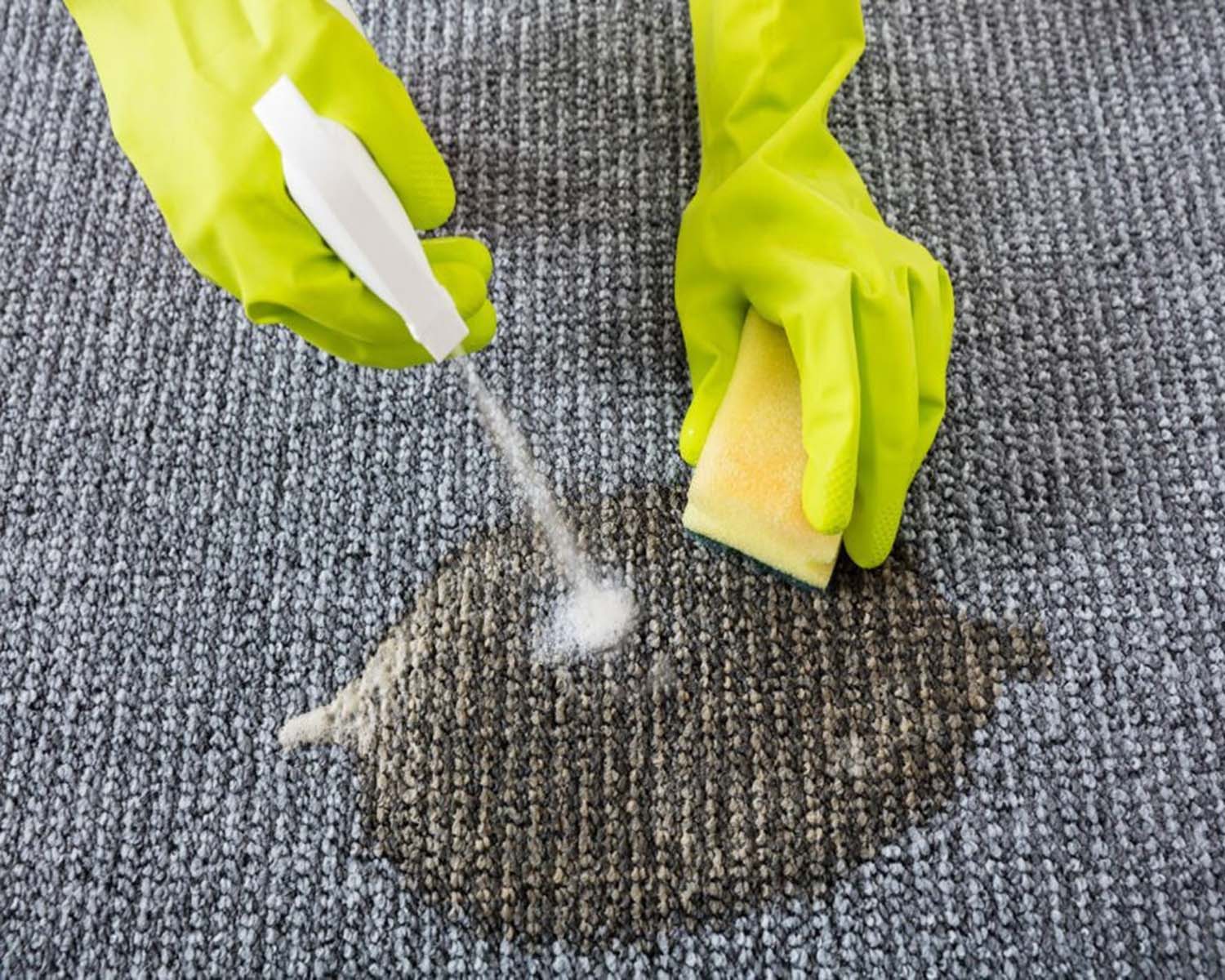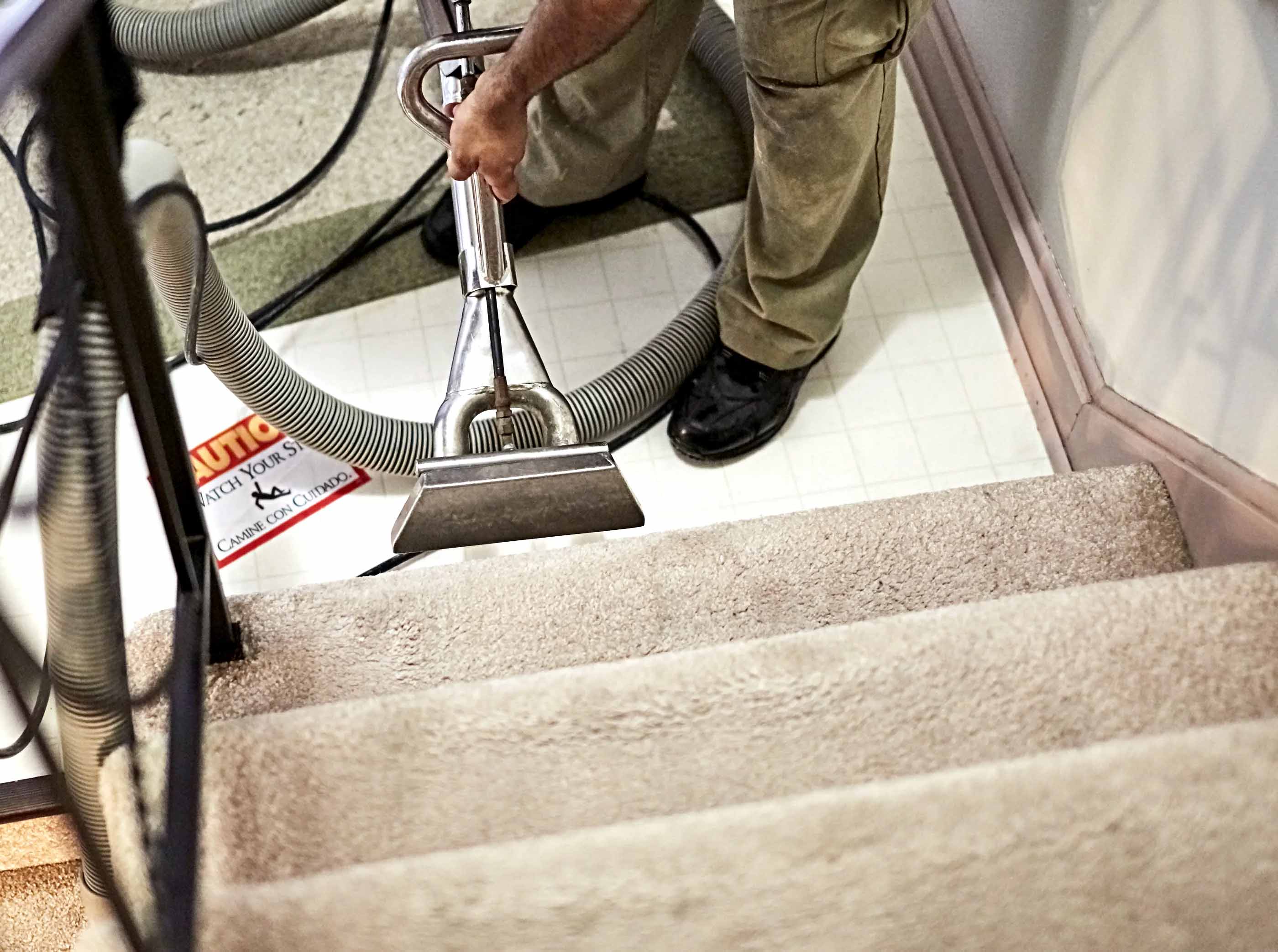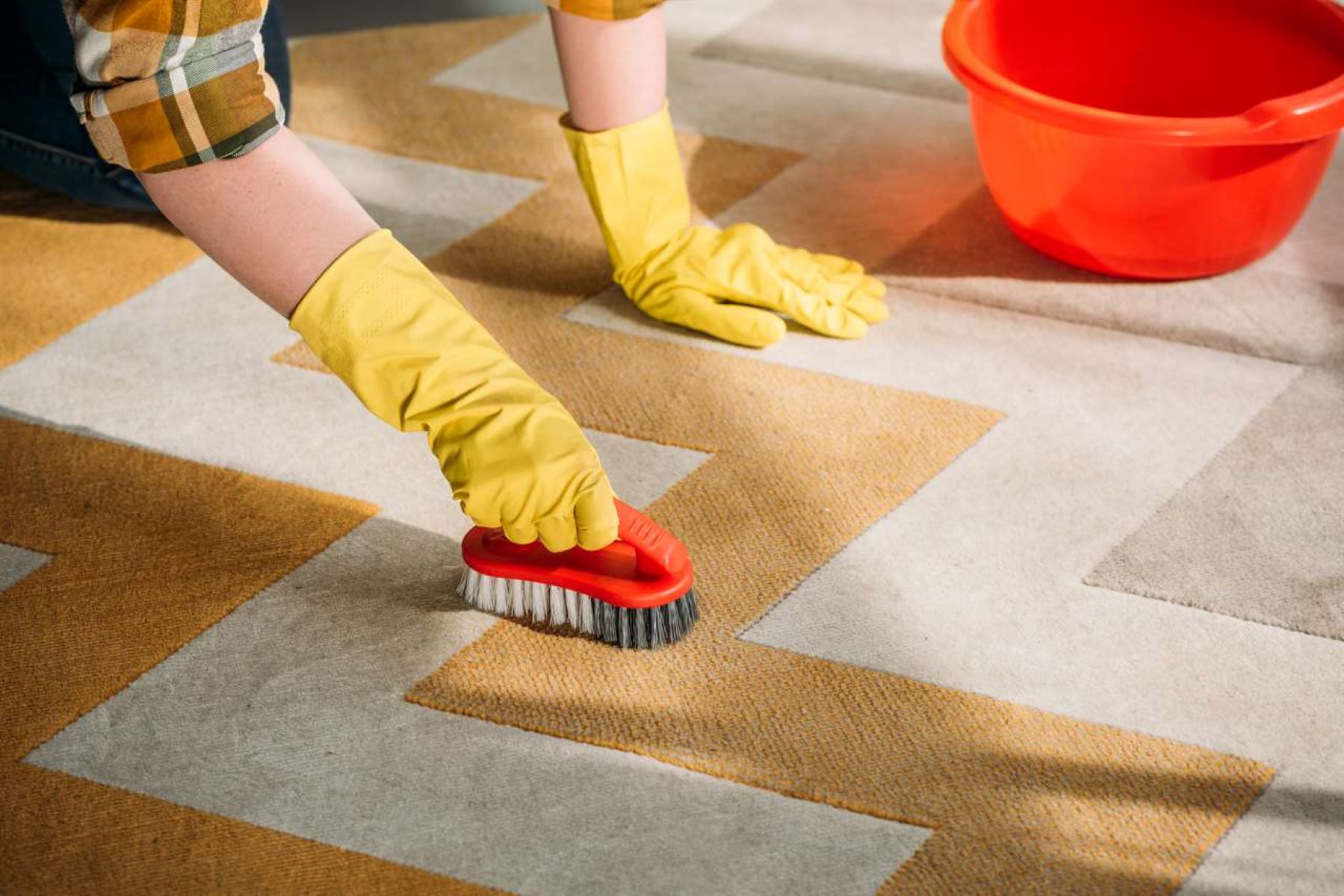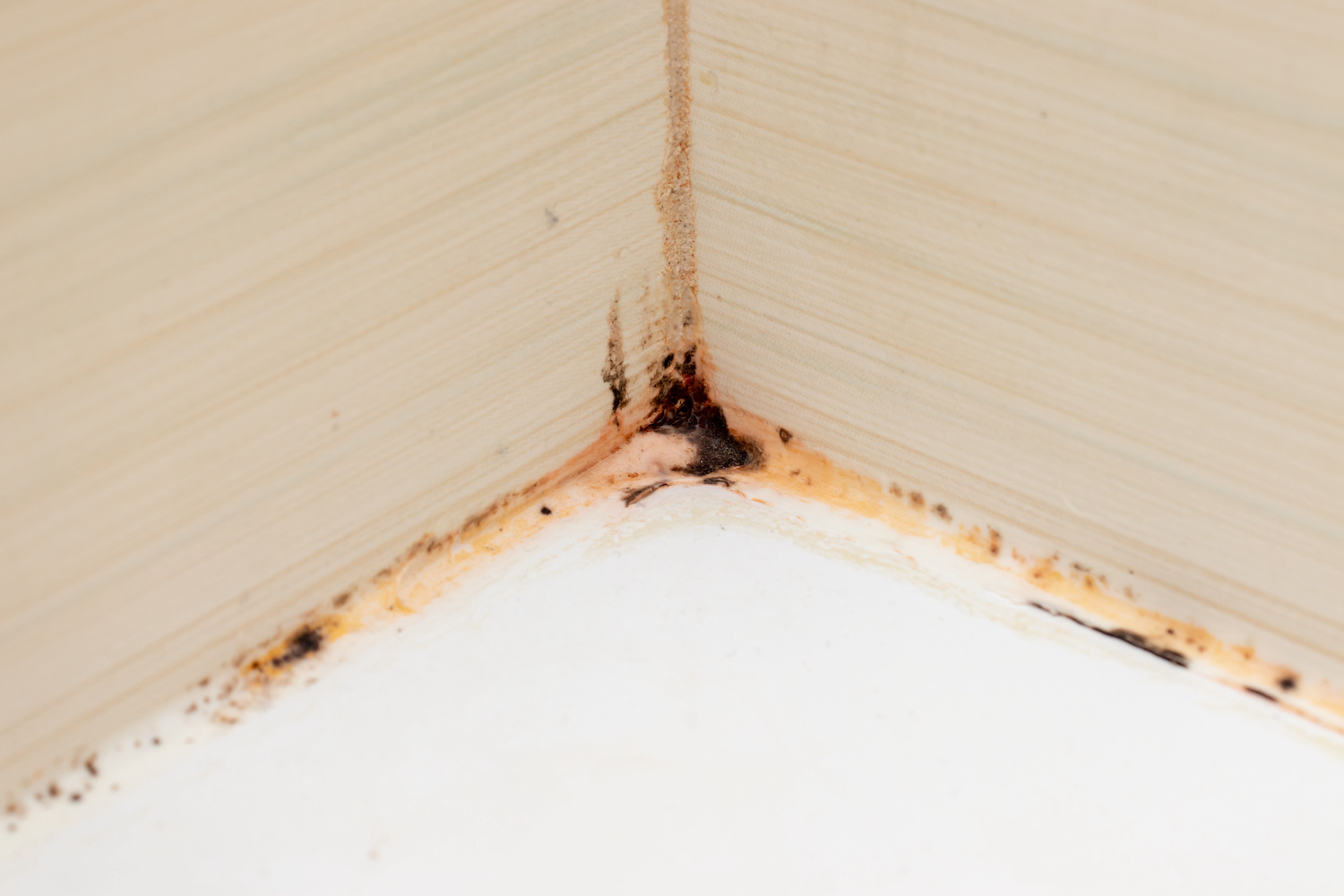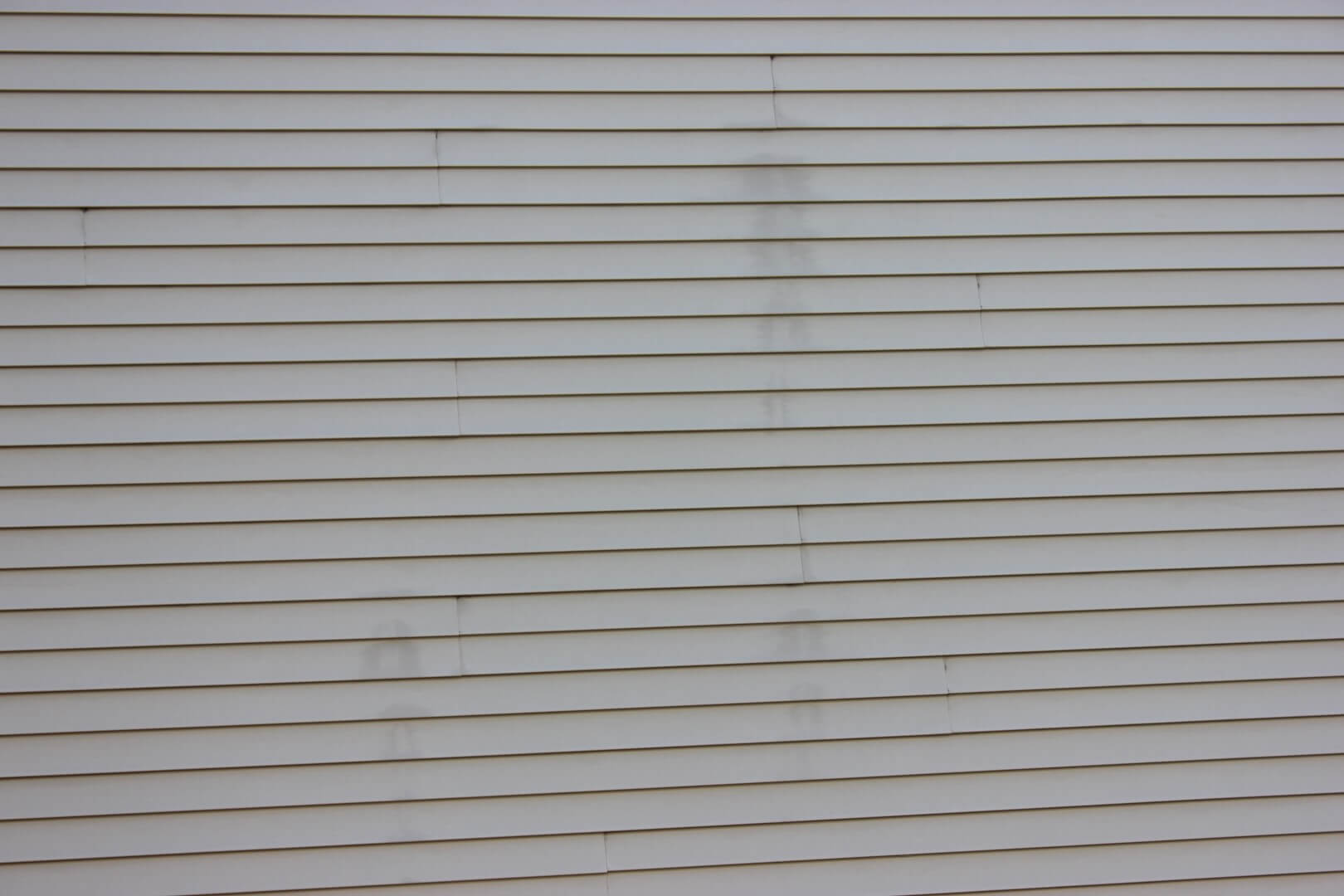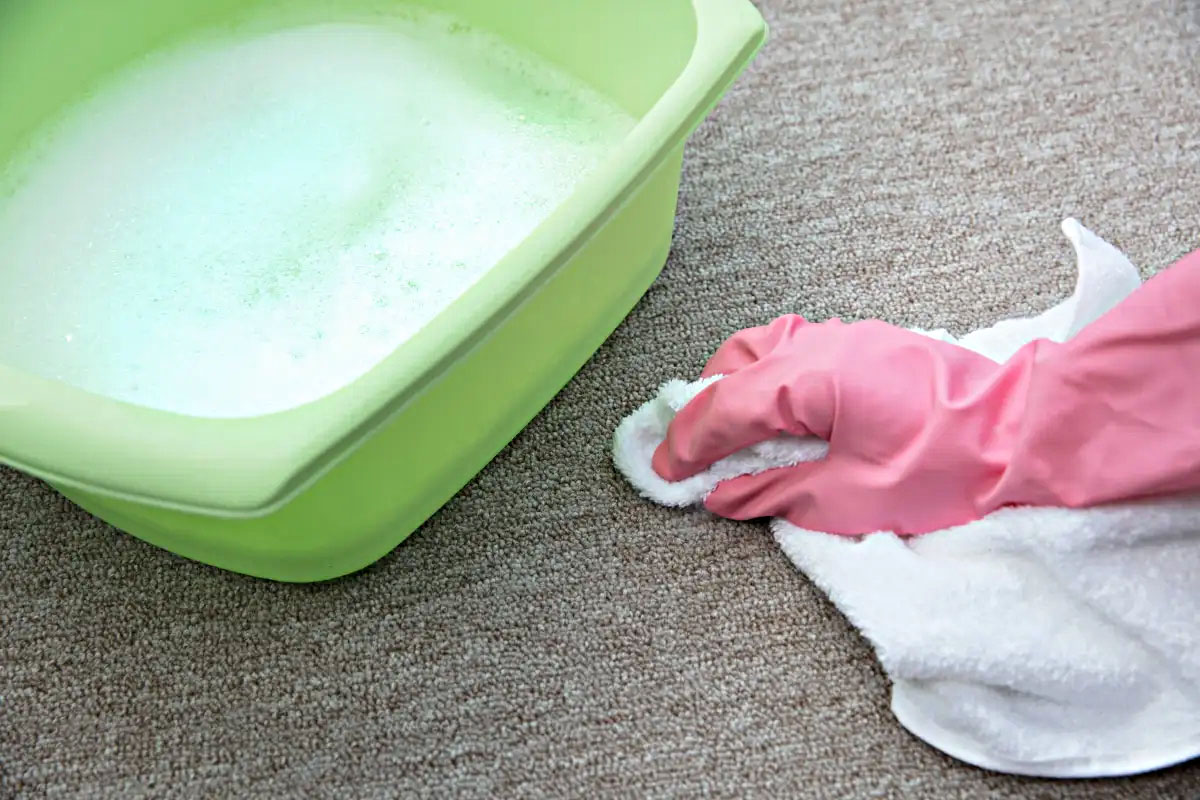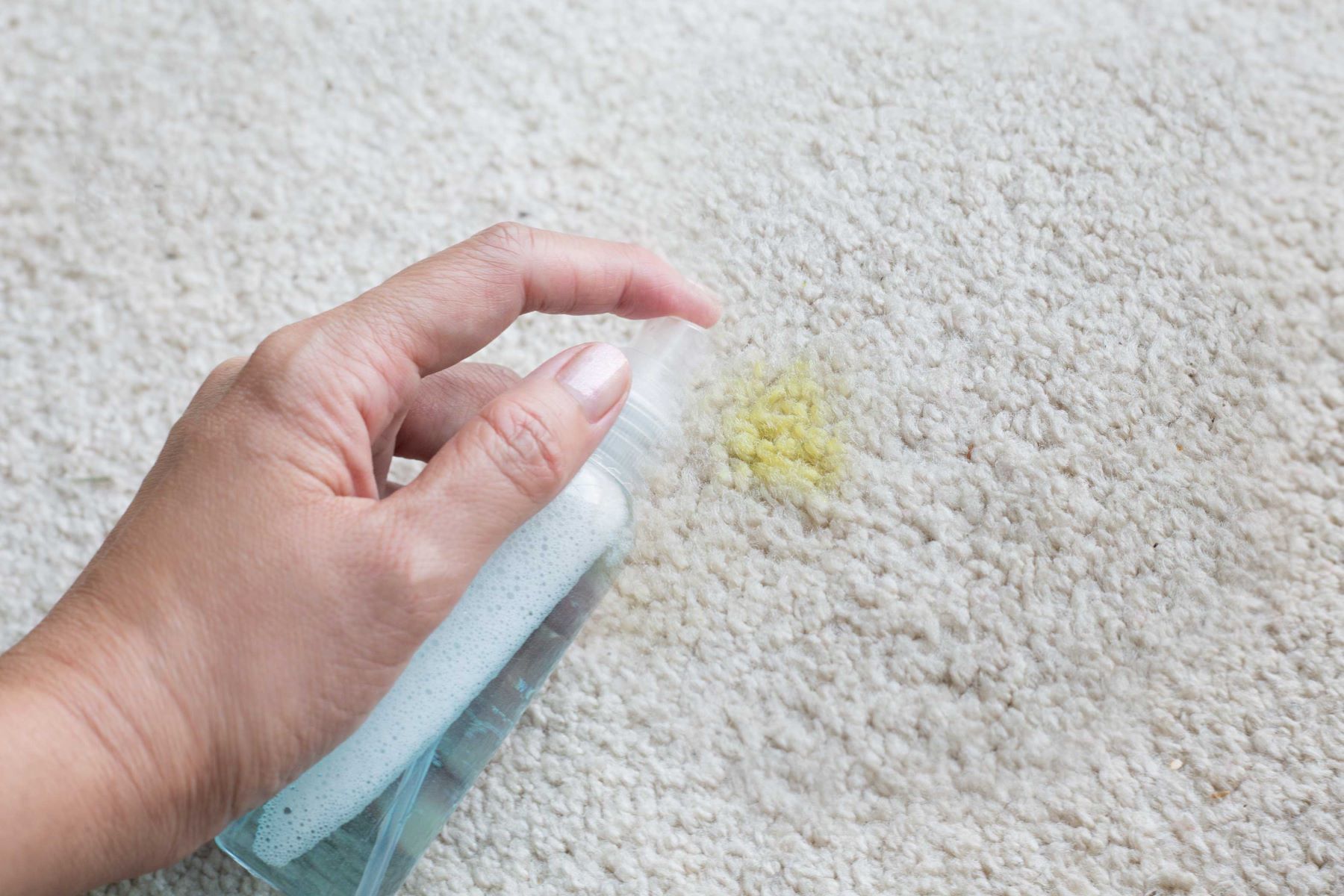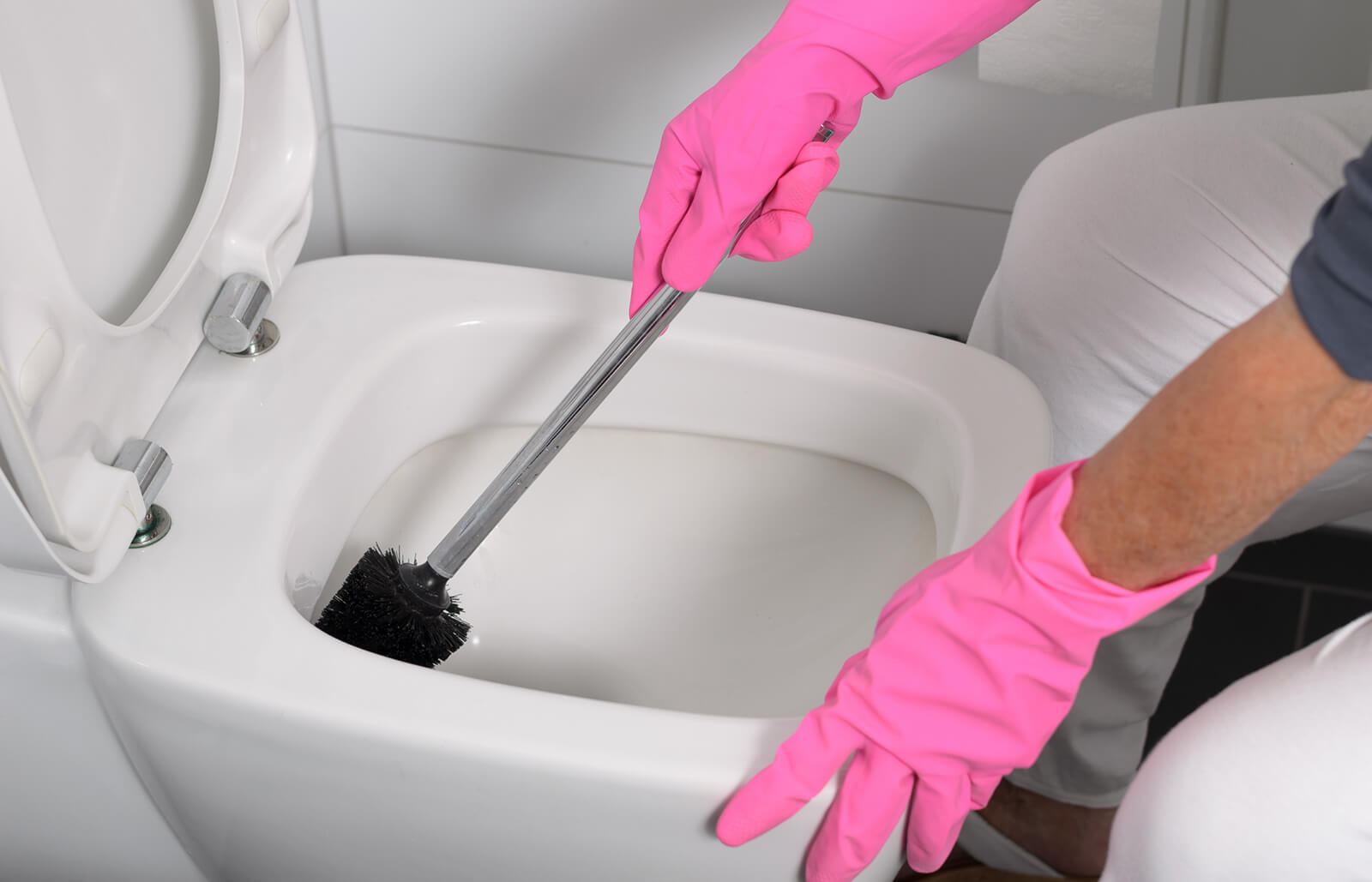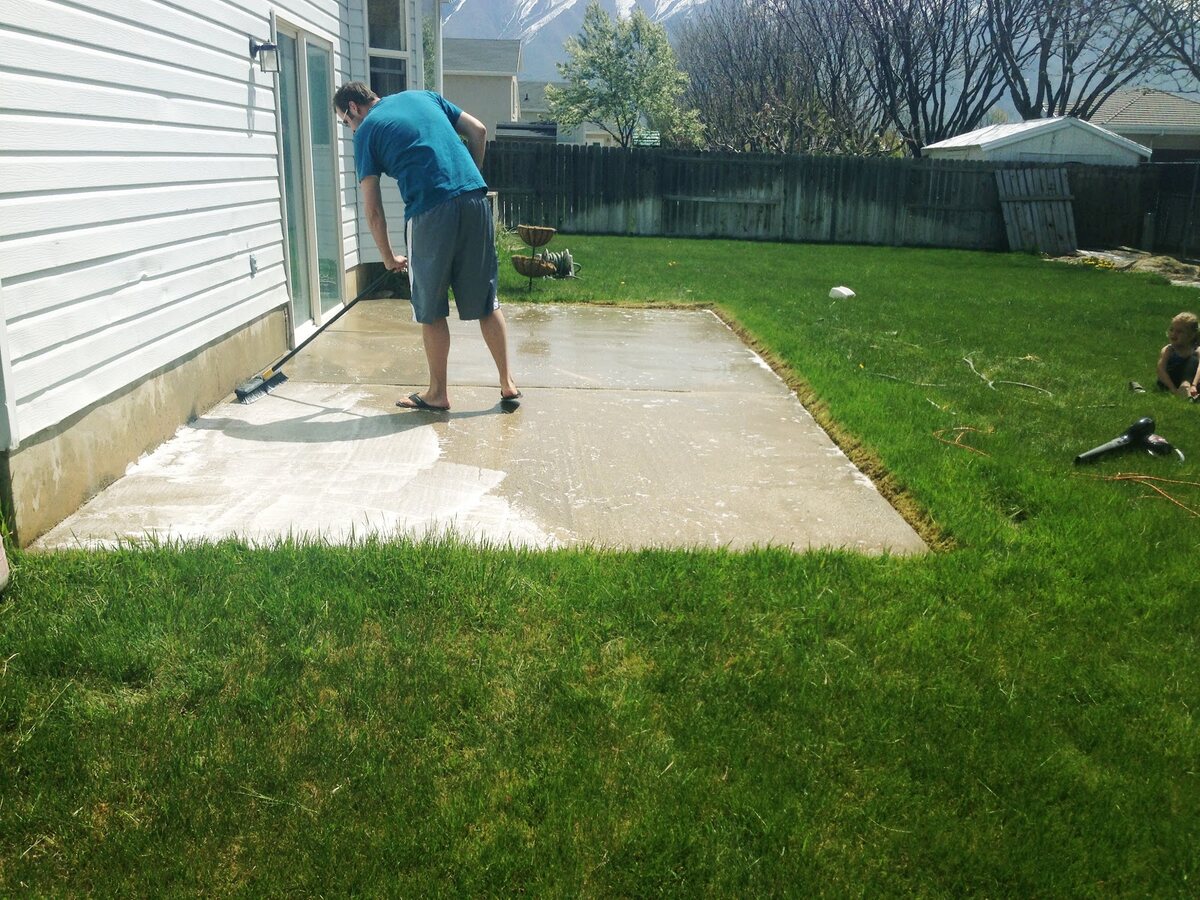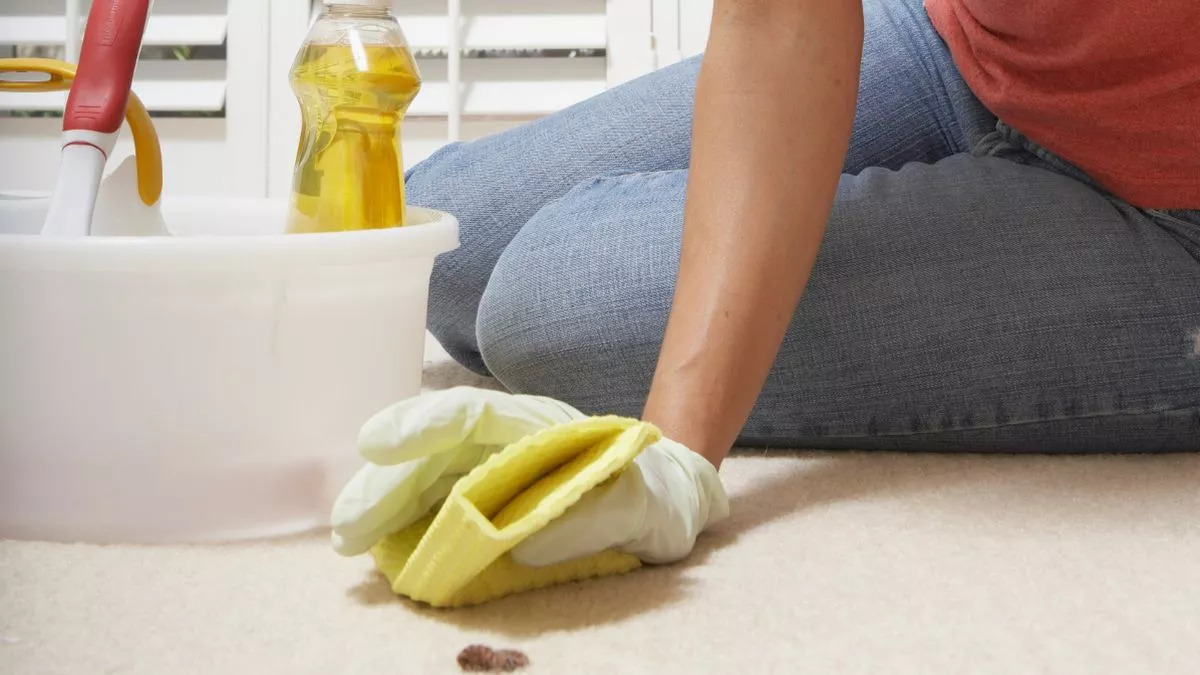

Articles
How To Get Stains Off Carpet
Modified: September 1, 2024
Learn effective techniques from our articles on how to remove stains off your carpet. Get expert tips and advice for a stain-free and fresh-looking carpet.
(Many of the links in this article redirect to a specific reviewed product. Your purchase of these products through affiliate links helps to generate commission for Storables.com, at no extra cost. Learn more)
Introduction
Having stains on your carpet can be a frustrating and unsightly problem. Whether it’s a spilled glass of red wine, a muddy footprint, or a pet accident, these stains can quickly ruin the appearance of your carpet. However, with the right knowledge and techniques, you can easily get rid of stains and restore your carpet’s pristine condition.
In this article, we will guide you through the process of removing various types of stains from your carpet. From food and beverage stains to pet accidents and household spills, we will cover it all. We will provide you with step-by-step instructions on how to tackle each type of stain and ensure that your carpet looks as good as new.
Before we dive into the specific stain removal techniques, it’s important to understand the different types of carpet stains you may encounter.
Understanding the Types of Carpet Stains
Carpet stains can be categorized into different types based on their sources and compositions. Some common types of stains include:
- Food and Beverage Stains: These stains result from spills of food and drinks. Examples include coffee stains, wine stains, and juice stains.
- Pet Stains and Odors: If you have pets, you may have to deal with urine stains, feces stains, or pet vomit stains. These stains not only leave visible marks but can also cause unpleasant odors.
- Common Household Stains: This category includes stains caused by everyday items such as ink stains from pens, marker stains, or crayon marks.
- Grease and Oil Stains: Grease and oil stains can occur from cooking mishaps, oily substances, or even from shoes tracking in dirt and oil from outside.
- Ink and Marker Stains: These stains can happen when an ink pen leaks or a marker accidentally marks the carpet.
- Stubborn Stains: Some stains may require extra effort to remove, such as old and set-in stains or stains caused by substances like red wine or blood.
Each type of stain requires a different approach and cleaning solution, so it’s important to identify the stain correctly before attempting to remove it.
Now that we have a better understanding of the types of carpet stains, let’s move on to the next section: preparing the necessary cleaning supplies.
Key Takeaways:
- Act quickly and use the appropriate cleaning solutions to effectively remove various types of carpet stains, from food and beverage spills to pet accidents and stubborn marks. Prevention and prompt action are key to maintaining pristine carpets.
- Implement preventive measures such as using doormats, removing shoes, and setting up protective mats to minimize the risk of future carpet stains. Combine knowledge with vigilance to keep carpets looking fresh and clean.
Read more: How To Get Stains Off The Countertops
Understanding the Types of Carpet Stains
Carpet stains can be classified into various types based on their sources and compositions. It’s essential to identify the type of stain correctly so that you can apply the appropriate cleaning technique and solution. Let’s take a closer look at some common types of carpet stains:
- Food and Beverage Stains: These stains are caused by spills of food and drinks. They can include coffee stains, wine stains, juice stains, and sauce stains, among others. These stains often leave behind visible marks and can be challenging to remove if not treated promptly.
- Pet Stains and Odors: If you have pets, you may have to deal with urine stains, feces stains, and pet vomit stains. Not only are these stains unsightly, but they can also leave behind unpleasant odors. It’s crucial to address pet stains promptly to prevent them from seeping deep into the carpet fibers and causing long-lasting damage.
- Common Household Stains: This category includes stains caused by everyday items, such as ink stains from pens or markers, paint stains, glue stains, and crayon marks. These stains can occur due to accidents or mishaps while working or playing at home.
- Grease and Oil Stains: Grease and oil stains can result from cooking mishaps, oily substances being spilled, or shoes tracking in dirt and oil from outside. These stains can be particularly stubborn and require specific techniques and cleaning agents for effective removal.
- Ink and Marker Stains: Ink and marker stains can occur when a pen leaks, a marker accidentally marks the carpet, or a child gets carried away with their artistic endeavors. These stains can be quite noticeable and may require specialized methods to remove them completely.
- Stubborn Stains: Some stains fall into the category of stubborn stains that require extra effort to remove. This could include old and set-in stains that have been left untreated for a long time or stains caused by substances like red wine, blood, or pet accidents. These stains often require a combination of different cleaning techniques and may need professional intervention.
Identifying the type of stain is the first step in effective stain removal. By understanding the specific characteristics of each type, you can tailor your cleaning approach and choose the appropriate cleaning solution. In the following sections, we will delve into the techniques and methods to successfully remove each type of carpet stain.
Now that you have a basic understanding of the different types of carpet stains, let’s proceed to the next section, where we will discuss the necessary cleaning supplies you’ll need to have on hand.
Preparing the Necessary Cleaning Supplies
Before you start tackling the stains on your carpet, it’s important to gather all the necessary cleaning supplies. Having the right tools and products at hand will make the stain removal process much easier and more effective. Here are the essential cleaning supplies you’ll need:
- Carpet Stain Remover: Invest in a good quality carpet stain remover. Look for one that is designed to tackle a wide range of stains, including food, drink, pet, and common household stains. There are many commercial stain removers available in the market, or you can opt for homemade solutions using ingredients like baking soda, vinegar, or hydrogen peroxide.
- White Cloth or Paper Towels: Having a stack of white cloths or paper towels is essential for blotting and absorbing the stains. Avoid using colored or patterned cloths, as they may transfer dye onto the carpet.
- Soft-Bristled Brush or Sponge: A soft-bristled brush or sponge is useful for gently agitating the stain remover into the carpet fibers without causing damage or fraying. Make sure the brush or sponge is clean and free from any residual chemicals.
- Clean White Towels or Rags: Clean white towels or rags can be utilized for blotting and drying the carpet after the stain removal process. These towels should be absorbent and clean to avoid spreading any dirt or residue onto the carpet.
- Warm Water: Warm water is often used in conjunction with the stain remover to dilute and rinse away the stain. Make sure the water is not too hot, as it may damage certain types of carpets.
- Bucket: A bucket is handy for preparing the cleaning solution, diluting the stain remover, and holding water for the rinsing process.
- Gloves: Wearing gloves is recommended, especially when dealing with strong stain removers or chemicals. This will protect your hands and skin from any potential irritants.
- Vacuum Cleaner: Before treating the stains, vacuum the carpet thoroughly to remove any loose dirt, debris, or particles. This will prevent them from further embedding into the carpet fibers during the stain removal process.
It’s always a good idea to have these cleaning supplies readily available in a designated cleaning kit or cupboard. This way, you can quickly access them whenever a stain occurs, allowing you to address it promptly and prevent it from becoming a permanent blemish on your carpet.
Now that we have all the necessary cleaning supplies in place, let’s move on to the next section, where we will discuss general stain removal techniques that apply to various types of carpet stains.
General Stain Removal Techniques
When it comes to removing carpet stains, there are a few general techniques that apply to various types of stains. These techniques serve as a foundation for the stain removal process and can be customized based on the specific stain you’re dealing with. Follow these general stain removal techniques:
- Act Quickly: The key to successfully removing stains from your carpet is to act promptly. The longer a stain sits on the carpet, the harder it becomes to remove. As soon as you notice a stain, grab your cleaning supplies and start the removal process.
- Blot, Don’t Rub: When dealing with a fresh stain, use a clean white cloth or paper towel to gently blot the area. Avoid rubbing the stain, as it can spread the stain further into the carpet fibers and damage them.
- Work from the Outside In: For large stains or spills, start blotting from the outer edges of the stain and gradually work your way towards the center. This helps prevent the stain from spreading to a larger area.
- Test the Cleaning Solution: Before applying a stain remover or cleaning solution to the entire stain, test it on a small, inconspicuous area of the carpet. This helps ensure that the cleaning solution does not damage or bleach the carpet fibers.
- Follow the Instructions: Read and follow the instructions provided by the manufacturer of the stain remover or cleaning solution. Different products may have specific guidelines for application, dwell time, and rinsing.
- Blot and Rinse: After applying the cleaning solution to the stain, gently blot the area with a clean white cloth or paper towel. Then, rinse the area with warm water to remove any residue or remaining cleaning solution. Blot the area again to remove excess moisture.
- Allow Proper Drying: Ensure that the treated area is completely dry before allowing foot traffic or placing any furniture back on it. This helps prevent re-soiling or color transfer.
- Repeat as Necessary: Stubborn or set-in stains may require multiple treatment sessions. If the stain does not fully come out with the first attempt, repeat the process until you achieve the desired results.
These general stain removal techniques serve as a solid foundation for effectively tackling carpet stains. However, it’s important to note that specific types of stains may require additional steps or specialized cleaning solutions. In the following sections, we will explore the techniques and remedies for removing different types of carpet stains, such as food and beverage stains, pet stains and odors, common household stains, grease and oil stains, ink and marker stains, and stubborn stains.
Now that you are familiar with the general stain removal techniques, let’s dive into specific methods for removing food and beverage stains from your carpet.
Removing Food and Beverage Stains
Food and beverage stains are among the most common types of carpet stains. Whether it’s a spilled cup of coffee, a dropped plate of spaghetti sauce, or a splatter of red wine, these stains can be frustrating to deal with. However, with the right approach and some simple household remedies, you can effectively remove food and beverage stains from your carpet.
Here are some steps to follow when tackling food and beverage stains:
- Blot Excess Liquid: If the spill is fresh, use a clean white cloth or paper towel to blot up as much of the liquid as possible. Be gentle and avoid rubbing, as this can smear the stain and push it deeper into the carpet fibers.
- Prepare a Cleaning Solution: Mix a teaspoon of mild dish soap with a cup of warm water. Alternatively, you can use a carpet stain remover specifically designed for food and beverage stains. Make sure to test the cleaning solution on a small, inconspicuous area of the carpet first to ensure it doesn’t cause any discoloration.
- Apply the Cleaning Solution: Dip a clean white cloth or sponge into the cleaning solution and gently blot the stained area. Work from the outside of the stain towards the center, using small, circular motions. Avoid scrubbing vigorously, as this can damage the carpet fibers.
- Blot and Rinse: After applying the cleaning solution, use a separate cloth or sponge dampened with clean water to blot the area and remove any residue. Continue blotting until the stain is no longer visible, periodically switching to a clean part of the cloth or sponge.
- Dry the Area: Once the stain is removed, blot the area with a dry white cloth or paper towel to absorb excess moisture. If possible, open windows or use fans to help speed up the drying process.
- Repeat if Necessary: For stubborn or older stains, the process may need to be repeated multiple times. Be patient and persistent, and continue following the steps until the stain is fully removed.
Remember, it’s crucial to address food and beverage stains as soon as possible to prevent them from setting in and becoming more difficult to remove. The key is to act quickly, blot gently, and use the appropriate cleaning solution.
For specific food and beverage stains, such as red wine or coffee, you may need to employ additional remedies. For example:
- Red Wine Stains: Blot up as much of the wine as possible, then sprinkle the stain with salt or baking soda. Let it sit for a few minutes to absorb the liquid, then vacuum it up. Use the cleaning solution mentioned earlier to treat any remaining residue.
- Coffee Stains: Blot up the coffee and rinse the stained area with cold water. Mix equal parts white vinegar and water, and apply it to the stain. Blot again with clean water to remove the vinegar smell.
By following these steps and utilizing the appropriate techniques, you can successfully remove food and beverage stains from your carpet. However, prevention is always the best approach. Try to avoid eating or drinking over the carpeted areas and use protective mats or coasters to minimize the risk of spills.
Now that you have the knowledge to address food and beverage stains, let’s move on to the next section, where we will discuss how to eliminate pet stains and odors from your carpet.
Read more: How To Get Stains Off A Mattress
Eliminating Pet Stains and Odors
Pets are a beloved part of many households, but they can sometimes leave behind stains and unpleasant odors on your carpet. Whether it’s urine, feces, or vomit stains, it’s essential to address these issues promptly to prevent long-term damage to your carpet and eliminate odors. Here’s a step-by-step guide to eliminating pet stains and odors from your carpet.
- Act Quickly: It’s crucial to tackle pet stains as soon as you discover them. This will prevent the stain and odor from setting in and becoming more difficult to remove.
- Remove Solid Waste: If there is solid waste on the carpet, carefully pick it up using gloves or a plastic bag. Dispose of it properly and avoid touching it directly.
- Blot Liquids: For fresh urine or vomit stains, use a clean white cloth or paper towel to blot up as much liquid as possible. Press down firmly and absorb the moisture without rubbing or scrubbing.
- Apply an Enzymatic Cleaner: Enzymatic cleaners are specifically designed to break down the organic compounds present in pet stains, such as urine and feces. Follow the instructions on the cleaner and apply it to the stained area. These cleaners work by breaking down the stains at a molecular level, effectively eliminating the odor as well.
- Blot and Rinse: After applying the enzymatic cleaner, gently blot the area with a clean white cloth or sponge. Continue blotting until no more stain or residue transfers onto the cloth. Rinse the area with clean water and blot again to remove any remaining cleaner.
- Dry the Area: Allow the treated area to air dry completely. Avoid walking on the damp carpet to prevent re-soiling or spreading the stain.
- Neutralize Odors: In some cases, pet odors may linger even after the stain is removed. To neutralize any remaining odor, sprinkle baking soda liberally over the treated area. Leave it on for a few hours or overnight, then vacuum it up.
- Consider Professional Cleaning: If the stain or odor persists or if you have a particularly stubborn stain, it may be worth hiring a professional carpet cleaning service. They have specialized equipment and expertise to handle tough pet stains and odors.
Remember, consistency is key when dealing with pet stains. If your pet has repeated accidents in the same spot, it may be a sign of an underlying issue, such as a medical problem or behavioral concern. Consult with a veterinarian or animal behaviorist to address any underlying issues and prevent future accidents.
Additionally, it’s important to clean up pet accidents promptly and thoroughly to prevent them from becoming a habit or causing permanent damage to your carpet. Regular vacuuming and professional deep cleaning can also help maintain a fresh and odor-free environment.
Now that you know how to eliminate pet stains and odors, let’s move on to the next section, where we will explore how to treat common household stains on your carpet.
Blot the stain with a clean cloth to absorb as much liquid as possible. Then, mix 1 tablespoon of dish soap with 2 cups of warm water and blot the stain with the solution. Repeat until the stain is gone.
Treating Common Household Stains
Accidents happen, and common household stains are a frequent occurrence on carpets. From ink and paint stains to glue and crayon marks, these stains can be frustrating to deal with. However, with the right techniques and cleaning solutions, you can effectively treat common household stains and restore the appearance of your carpet. Here’s a step-by-step guide to treating these stains:
- Scrape or Blot: Depending on the type of stain, you may need to scrape off any excess material using a blunt knife or spoon. For stains like paint or glue, scrape off as much of the substance as possible without spreading it further.
- Prepare a Cleaning Solution: For most common household stains, a mild dish soap mixed with warm water can be an effective cleaning solution. Mix a few drops of dish soap in a bucket of warm water and stir well.
- Test the Solution: Before applying the cleaning solution to the entire stain, test it on a small, inconspicuous area of the carpet to ensure it doesn’t cause any discoloration or damage.
- Apply the Cleaning Solution: Dip a clean white cloth or sponge into the cleaning solution and gently blot the stained area. Work from the outside of the stain inward to prevent it from spreading further.
- Gently Scrub: For stubborn stains, you may need to gently scrub the area using a soft-bristled brush or sponge. Be careful not to scrub too hard, as it can damage the carpet fibers.
- Rinse with Clean Water: After applying the cleaning solution, rinse the area with clean water to remove any soap residue. Blot with a clean white cloth or sponge until no more residue transfers onto the cloth.
- Dry the Area: Allow the treated area to air dry completely. Avoid stepping on the damp carpet until it is dry to prevent re-soiling or spreading the stain.
- Repeat if Necessary: If the stain persists, repeat the process until the stain is fully removed. Some household stains may require multiple attempts to eliminate completely.
It’s important to note that some common household stains, such as permanent marker or certain dyes, may be more challenging to remove. In these cases, it may be necessary to seek professional help or consider carpet replacement options.
Prevention is always the best approach when it comes to common household stains. Take precautions to protect your carpet from potential stains by using protective covers or rugs in high-traffic areas, keeping art supplies away from the carpeted space, and promptly cleaning up any spills or accidents.
Now that you have learned how to treat common household stains on your carpet, let’s move on to the next section, where we will explore how to deal with grease and oil stains.
Dealing with Grease and Oil Stains
Grease and oil stains can be particularly stubborn and challenging to remove from carpets. Whether it’s cooking oil, grease from food, or oil tracked in from outside, these stains can leave unsightly marks. However, with the right approach and some household remedies, you can effectively tackle grease and oil stains on your carpet. Here’s a step-by-step guide to dealing with these types of stains:
- Blot Excess: If the grease or oil spill is fresh, start by blotting up as much of the excess liquid as possible using a clean white cloth or paper towel. Be careful not to spread the stain further by rubbing or scrubbing.
- Apply a Dry Cleaning Solvent: Dry cleaning solvents, such as rubbing alcohol or isopropyl alcohol, can be effective in breaking down and lifting grease and oil stains. Moisten a clean white cloth with the solvent and gently blot the stained area. Be sure to test the solvent on a small, inconspicuous area of the carpet first to ensure it doesn’t cause any damage or discoloration.
- Blot with Warm Water: After applying the dry cleaning solvent, dip a clean white cloth or sponge in warm water and blot the area to remove any residue from the solvent.
- Apply Dish Soap Solution: Mix a few drops of dish soap with warm water in a bucket. Dip a clean cloth into the soapy solution and gently blot the stain, working from the outside in. Avoid scrubbing vigorously, as this can damage the carpet fibers.
- Rinse and Blot: Rinse the area with clean water to remove any soap residue, then blot with a clean white cloth or sponge to dry and remove excess moisture.
- Dry the Area: Allow the treated area to air dry completely. You can use a fan or open windows to help speed up the drying process. Avoid walking on the carpet until it is fully dry to prevent re-soiling or spreading of the stain.
- Repeat if Necessary: For stubborn or older grease and oil stains, you may need to repeat the above steps until the stain is completely removed. Patience and persistence are key.
It’s important to note that some grease and oil stains may require additional treatment or specialized cleaning techniques. If the stain persists or if you are unsure about the best approach, consider consulting a professional carpet cleaner for advice or assistance.
To prevent future grease and oil stains on your carpet, take precautions such as placing mats or rugs in high-traffic areas, removing shoes before entering carpeted spaces, and avoiding eating or cooking near the carpeted areas.
Now that you know how to deal with grease and oil stains, let’s move on to the next section, where we will explore how to remove ink and marker stains from your carpet.
Removing Ink and Marker Stains
Ink and marker stains on your carpet can be a cause for concern, as they can be vivid and challenging to remove. Whether it’s an accidental pen leak, a marker mishap, or a child’s creative endeavor gone wrong, it’s important to address these stains promptly to increase the chances of successful removal. Here’s a step-by-step guide to removing ink and marker stains from your carpet:
- Blot the Stain: If the ink or marker stain is fresh, start by blotting up as much of the liquid as possible using a clean white cloth or paper towel. Be cautious not to spread the stain further by rubbing or scrubbing.
- Apply Rubbing Alcohol: Moisten a clean white cloth with rubbing alcohol. Gently blot the stained area, working from the outside in. The rubbing alcohol helps break down the ink or marker pigment.
- Blot with Warm Water: Dip another clean white cloth or sponge into warm water and continue blotting the area to remove any residue from the rubbing alcohol.
- Make a Vinegar-Baking Soda Paste: If the stain persists, mix a paste by combining equal parts vinegar and baking soda. Apply the paste to the stain and let it sit for about 15 minutes. The vinegar and baking soda combination can help lift stubborn ink or marker stains.
- Scrub Gently and Rinse: Using a soft-bristled brush or sponge, gently scrub the stain in circular motions, applying gentle pressure. Rinse the area with clean water and continue blotting until no more residue transfers onto the cloth or sponge.
- Dry the Area: Allow the treated area to air dry completely. You can use fans or open windows to help expedite the drying process. Avoid walking on the carpet until it is fully dry to prevent re-soiling or spreading of the stain.
- Repeat if Necessary: Depending on the severity of the ink or marker stain, you may need to repeat the above steps until the stain is fully removed. Persistent stains may require professional cleaning or additional specialized treatments.
It’s important to note that ink and marker stains may be more challenging to remove compared to other types of stains. Different types of ink or markers may require slightly different approaches, so it’s always a good idea to test any cleaning solution on a small, inconspicuous area of the carpet first to ensure it doesn’t cause any damage or discoloration.
To prevent ink and marker stains on your carpet, keep writing utensils away from carpeted areas, especially when children are involved. Use protective covers or mats for arts and crafts activities to minimize the risk of accidental stains.
Now that you know how to handle ink and marker stains, let’s move on to the next section, where we will tackle stubborn stains that may require extra effort to remove.
Read more: How To Get Water Stains Off Of Glass
Tackling Stubborn Stains
Stubborn stains can be a challenge to remove from your carpet, requiring extra effort and specific techniques. These stains may be older, set-in, or caused by substances like red wine, blood, or pet accidents. While they may seem intimidating, with the right approach, you can tackle stubborn stains and restore the appearance of your carpet. Here’s a step-by-step guide to help you tackle stubborn stains:
- Blot and Remove Excess: If the stain is fresh, start by blotting up as much of the liquid or solid material as possible using a clean white cloth or paper towel. Be careful not to spread the stain further by rubbing or scrubbing.
- Prepare a Stain-Specific Solution: Depending on the type of stubborn stain, you will need to prepare a stain-specific solution. Some common stain remedies include:
- Vinegar Solution: Mix equal parts white vinegar and warm water. This solution works well for stains caused by substances like coffee, red wine, or pet accidents.
- Hydrogen Peroxide Solution: Mix equal parts hydrogen peroxide and warm water. This solution is effective for removing blood stains.
- Ammonia Solution: Mix 1 tablespoon of clear household ammonia with 1 cup of warm water. This solution is suitable for tackling tough stains like oil or grease.
- Apply and Blot: Dip a clean white cloth or sponge into the stain-specific solution and gently blot the stained area. Work from the outside in and avoid scrubbing vigorously, as this can damage the carpet fibers.
- Rinse and Blot: After applying the solution, rinse the area with clean water to remove any residue. Blot the area with a clean white cloth or sponge until no more residue transfers onto the cloth.
- Dry the Area: Allow the treated area to air dry completely. You can use fans or open windows to help speed up the drying process. Avoid walking on the damp carpet until it is fully dry to prevent re-soiling or spreading of the stain.
- Repeat if Necessary: Stubborn stains may require multiple treatment sessions to achieve the desired results. If the stain persists, repeat the above steps until the stain is fully eliminated.
- Consider Professional Help: If the stubborn stain remains despite your efforts, it may be time to seek professional assistance. Professional carpet cleaners have specialized equipment and expertise to tackle tough stains and restore your carpet’s appearance.
It’s important to note that different types of stubborn stains may require different approaches and cleaning solutions. Always test any cleaning solution on a small, inconspicuous area of the carpet first to ensure it doesn’t cause damage or discoloration.
Remember, prevention is key to minimizing stubborn stains on your carpet. Address spills or accidents promptly, vacuum regularly to remove dirt and debris, and consider using protective mats or rugs in high-traffic areas.
Now that you are armed with the knowledge to tackle stubborn stains, let’s move on to the next section, where we will discuss tips for preventing future carpet stains.
Preventing Future Carpet Stains
While knowing how to remove carpet stains is essential, preventing them from happening in the first place is even better. By taking proactive measures and practicing good habits, you can minimize the risk of future stains and keep your carpet looking fresh and clean. Here are some tips to help you prevent future carpet stains:
- Act Quickly: When a spill or accident occurs, time is of the essence. Act quickly to prevent the spill from penetrating deep into the carpet fibers. Grab a clean cloth or paper towel and blot the area immediately to absorb as much liquid as possible.
- Use Doormats: Place doormats at entryways to your home to minimize the amount of dirt, debris, and outdoor contaminants that get tracked onto your carpets. Encourage family members and guests to wipe their feet before entering the living areas.
- Remove Shoes: Make it a habit to remove shoes when entering your home. Shoes can track in dirt, oil, and other substances that can easily stain your carpet. Provide a designated area for shoes and encourage family members and guests to take them off.
- Set Up Protective Mats and Rugs: In high-traffic areas or areas prone to spills, consider using protective mats or rugs. These can act as a barrier against stains and make it easier to clean up any messes.
- Properly Train Pets: If you have pets, make sure to properly train them to minimize accidents on the carpet. Take them outside regularly for bathroom breaks and provide them with appropriate areas for scratching or playing.
- Use Stain-Resistant Treatments: Consider applying a stain-resistant treatment to your carpets. These treatments help repel liquids and make it easier to clean up spills before they become stains. Consult with a professional carpet cleaner for recommendations on effective stain-resistant treatments.
- Keep Food and Drinks in Designated Areas: Establish designated areas, such as the kitchen or dining room, for eating and drinking. This helps contain potential spills and reduces the chances of accidents occurring in carpeted areas.
- Regularly Vacuum: Regular vacuuming helps remove dirt, dust, and debris that can contribute to staining and wear on your carpets. Aim to vacuum at least once a week, or more frequently in high-traffic areas.
- Address Stains Immediately: If a stain does occur, address it promptly. The longer a stain sits, the more difficult it becomes to remove. Refer to the appropriate stain removal techniques discussed earlier in this article to address stains effectively.
By implementing these preventive measures and establishing good habits, you can significantly reduce the likelihood of future carpet stains. However, it’s important to remember that accidents can still happen. Being prepared and equipped with stain removal knowledge will help you handle any unforeseen stains that may occur.
Now that you have learned how to prevent future carpet stains, let’s wrap up this article.
Conclusion
Dealing with stains on your carpet can be a frustrating experience, but with the right knowledge and techniques, you can effectively remove them and restore your carpet’s beauty. Throughout this article, we have explored various types of carpet stains and provided step-by-step instructions for their removal.
From food and beverage stains to pet accidents, common household stains, grease and oil stains, ink and marker stains, as well as stubborn stains, we have covered a wide range of techniques and solutions. By acting quickly, using the right cleaning supplies, and following the appropriate stain removal techniques, you can successfully eliminate most carpet stains.
Prevention is equally important when it comes to maintaining the appearance of your carpet. By implementing preventive measures such as using doormats, removing shoes, using protective mats or rugs, and promptly addressing spills and accidents, you can minimize the risk of future stains and prolong the life of your carpet.
Remember to always test any cleaning solution on a small, inconspicuous area of the carpet before applying it to the entire stain to ensure compatibility and prevent any damage or discoloration. For stubborn or persistent stains, don’t hesitate to seek professional help or consult with a carpet cleaning professional.
By combining the knowledge gained from this article with vigilance and proper maintenance, you can keep your carpet looking fresh, clean, and free from stains. Enjoy the comfort and beauty of your carpeted spaces without worrying about unsightly blemishes.
Now go forth armed with the tools and knowledge to conquer any carpet stain that comes your way!
Frequently Asked Questions about How To Get Stains Off Carpet
Was this page helpful?
At Storables.com, we guarantee accurate and reliable information. Our content, validated by Expert Board Contributors, is crafted following stringent Editorial Policies. We're committed to providing you with well-researched, expert-backed insights for all your informational needs.
